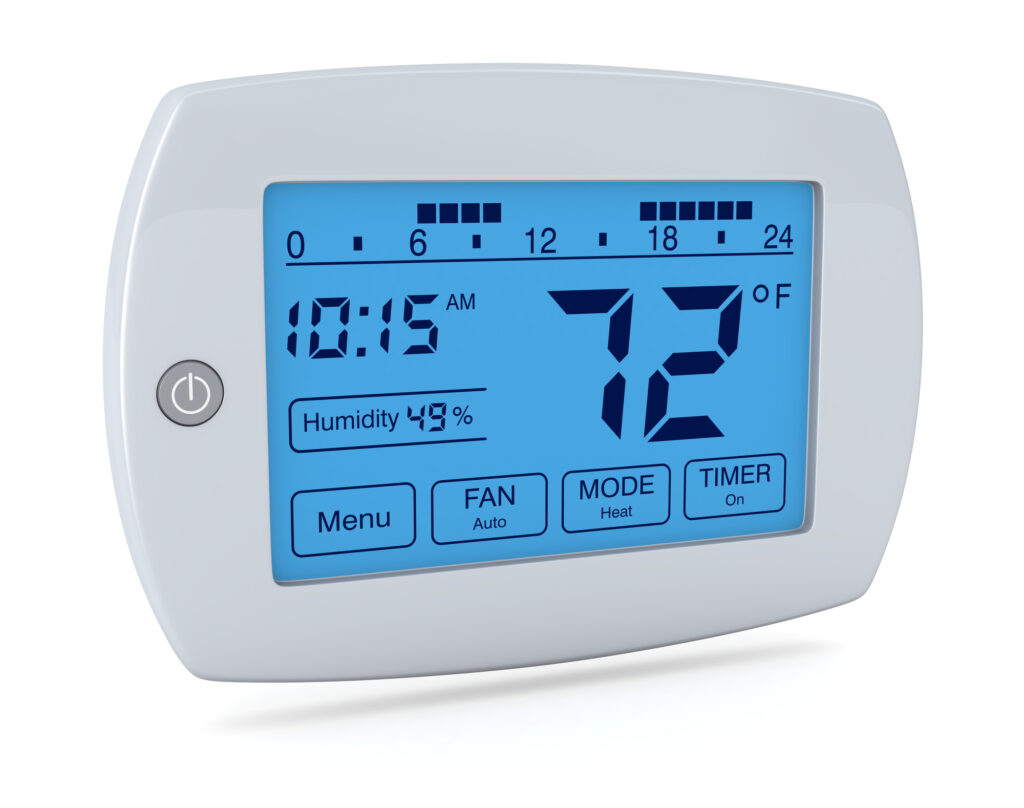
Did you know that the first modern electrical thermostat was invented over a century ago by Warren S. Johnson, an American inventor and entrepreneur?
Since then, thermostats have come a long way, and there’s now an overwhelming array of options available on the market. If you’re feeling a little heated about which one to choose, fear not!
Our guide to the different types of thermostats will help you stay cool, calm, and collected when it comes to controlling the temperature in your home or office.
Manual Thermostats
Manual thermostats have a dial or slider that you adjust to set the temperature. They are easy to use and install but they need constant manual adjustments to maintain the desired temperature. They are ideal for those on a budget and don’t need a lot of automation.
Note that they are not as energy efficient as other types.
Programmable Thermostats
Programmable thermostats allow you to set a schedule for your heating and cooling system to follow. You can program the thermostat to turn down the heat when you’re not at home and turn it back up before you return.
This can help save energy and reduce your utility bills. It also reduces wear and tear on your HVAC system. However, their initial cost is more expensive than manual thermostats.
Smart Thermostats
Smart thermostats are the most advanced type of thermostat. They connect to the internet and allow you to control the temperature in your home from anywhere using your smartphone or other devices.
Smart thermostats can learn your habits and adjust the temperature accordingly. They work with voice assistants allowing you to adjust the temperature using voice commands. They can provide you with detailed energy reports.
However, these thermostats are the most expensive types on the market.
Line Voltage Thermostats
Line voltage thermostats are used in electric heating systems. They use a higher voltage than low-voltage thermostats and are wired directly into the electrical system.
Line voltage thermostats are designed to handle higher voltages. This makes them more durable and able to withstand power fluctuations. Note that they are only suitable for electric heating systems and they need professional thermostat installation.
Low-Voltage Thermostats
Low-voltage thermostats are used in central heating and cooling systems. They operate on 24 volts of electricity.
Low-voltage thermostat installation is easier and they are more energy-efficient than line-voltage thermostats.
Wireless Thermostats
Wireless thermostats allow you to control the temperature in your home from anywhere with an internet connection. These thermostats use radio frequencies to communicate with the heating and cooling system, eliminating the need for wiring.
However, not all heating and cooling systems are compatible with wireless thermostats. Also, wireless thermostats can be affected by interference from other devices, which affects their performance.
How to Choose a Thermostat: Which Thermostat is Right for You?
A manual thermostat can be the best thermostat if you’re on a tight budget and don’t need much automation. A programmable thermostat may be the best option if you want to save on energy while improving comfort. A smart thermostat is the best option if you want the most cutting-edge features and remote access to your thermostat.
Make sure the thermostat you buy is compatible with the system you have. Consult with a thermostat specialist if you’re unsure about the best one. They can assist you in choosing a new thermostat that will suit your house and finances the best.
Exploring the Types of Thermostats in the Market
With so many different types of thermostats available, it can be challenging to know which one is right for your home. Understand the pros and cons of each type of thermostat before making a decision. Also, consider your needs and budget.
Contact us today to learn more about thermostat installation and more.
